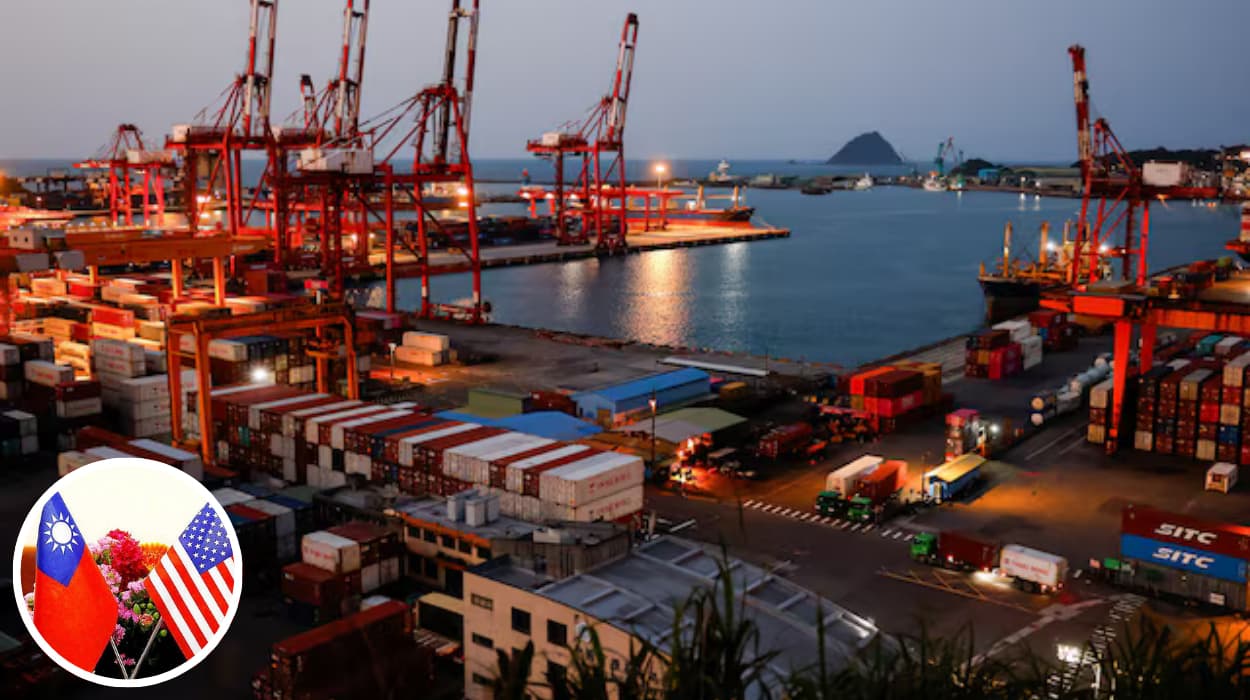Key Points
- Taiwan’s exports hit a new record, intensifying existing trade tensions with the United States.
- U.S. officials express concern over Taiwan’s export surge, citing potential impacts on the American manufacturing sector and trade balance.
- Currency risks escalate as Taiwan’s central bank intervenes to stabilize the New Taiwan dollar amid increased capital inflows.
- Taiwan’s tech sector, especially semiconductors, drives export growth, with global demand for chips remaining high.
- U.S. trade representatives consider new tariffs or restrictions in response to the widening trade deficit with Taiwan.
- Taiwanese officials defend their export policies, emphasizing the importance of global supply chains and mutual economic benefit.
- Financial markets react with volatility, as investors weigh the implications for both Asian and U.S. economies.
- Experts warn of potential ripple effects on global technology supply chains and currency markets.
Taiwan’s record-breaking export figures have reignited trade tensions with the United States, as American officials weigh new measures to address growing economic imbalances and currency risks. The surge, driven primarily by the island’s dominant semiconductor industry, is prompting concerns in Washington over the impact on U.S. manufacturing and the broader global supply chain.
How Did Taiwan’s Export Surge Lead to Renewed U.S. Trade Tensions?
As reported by the Associated Press and summarized in the July 2025 current events portal, Taiwan’s exports reached an all-time high this quarter, fueled by robust global demand for semiconductors and advanced electronics. The United States, a major consumer of these goods, has seen its trade deficit with Taiwan widen sharply, raising alarms among policymakers.
According to CBS News, U.S. officials have voiced concerns that the export boom could undermine domestic manufacturing and further erode America’s competitive position in high-tech sectors. Sources within the U.S. Trade Representative’s office, cited by PBS News Hour, indicate that tariffs or new trade restrictions are under consideration as possible responses to the growing imbalance.
What Role Does the Semiconductor Industry Play in the Trade Dispute?
Taiwan’s export success is closely tied to its semiconductor sector, which supplies critical components to technology firms worldwide. PBS News Hour’s July 7, 2025, broadcast highlighted that Taiwan Semiconductor Manufacturing Company (TSMC) and other chipmakers have ramped up production to meet surging global demand, especially from U.S. tech giants.
This dynamic has created a complex interdependence: while the U.S. relies on Taiwanese chips for its technology sector, it is also increasingly wary of the economic leverage this gives Taiwan and the potential vulnerabilities in the supply chain.
How Are Currency Risks and Central Bank Actions Factoring In?
The record export earnings have led to significant capital inflows into Taiwan, placing upward pressure on the New Taiwan dollar. In response, Taiwan’s central bank has intervened repeatedly to stabilize the currency and prevent excessive appreciation, according to coverage by the Associated Press and financial analysts cited in Democracy Now!.
U.S. Treasury officials have raised the possibility of labeling Taiwan a currency manipulator if interventions persist, a move that could further escalate trade tensions.
What Are the Potential U.S. Policy Responses?
As reported by CBS News and corroborated by Democracy Now!, the Biden administration is actively reviewing a range of policy tools to address the trade imbalance, including targeted tariffs, import quotas, and enhanced scrutiny of Taiwanese investments in the U.S. Congress leaders from both parties have called for a tougher stance, arguing that American workers are being disadvantaged by what they describe as “unfair trade practices.”
How Has Taiwan Responded to U.S. Concerns?
Taiwanese officials have defended their export policies, emphasizing the mutual benefits of open trade and the critical role their technology sector plays in the global economy. In statements to the press, Taiwan’s Ministry of Economic Affairs argued that restrictions or tariffs would disrupt supply chains and harm both economies.
Taiwanese business leaders have also cautioned that any U.S. measures targeting their exports could backfire, leading to higher costs for American consumers and companies.
What Are the Implications for Global Markets and Supply Chains?
Financial markets have responded to the escalating tensions with increased volatility, particularly in technology stocks and currency pairs involving the U.S. dollar and New Taiwan dollar. Analysts warn that prolonged disputes could disrupt the global supply of semiconductors, with ripple effects across industries from automotive to consumer electronics.
What Do Experts and Analysts Predict for the Future?
Experts interviewed by Democracy Now! and CBS News agree that the situation remains fluid, with both sides seeking to avoid a full-scale trade war but unwilling to back down from their respective positions. Some predict that ongoing negotiations could lead to a compromise, such as voluntary export restraints or joint investments in U.S. manufacturing capacity.
Others caution that geopolitical factors, including U.S.-China relations and regional security concerns, could complicate efforts to resolve the dispute.
What Are the Broader Geopolitical and Economic Risks?
The trade tensions come at a time of heightened geopolitical uncertainty in East Asia. As noted by the Associated Press and PBS News Hour, any disruption in Taiwan’s export flows could have far-reaching consequences, not only for the U.S. economy but also for global technology supply chains and regional stability.
In summary, Taiwan’s record exports have triggered a new phase of trade friction with the United States, raising complex questions about economic policy, currency management, and the future of global supply chains. As both governments weigh their next moves, the outcome will have significant implications for industries and consumers worldwide.

